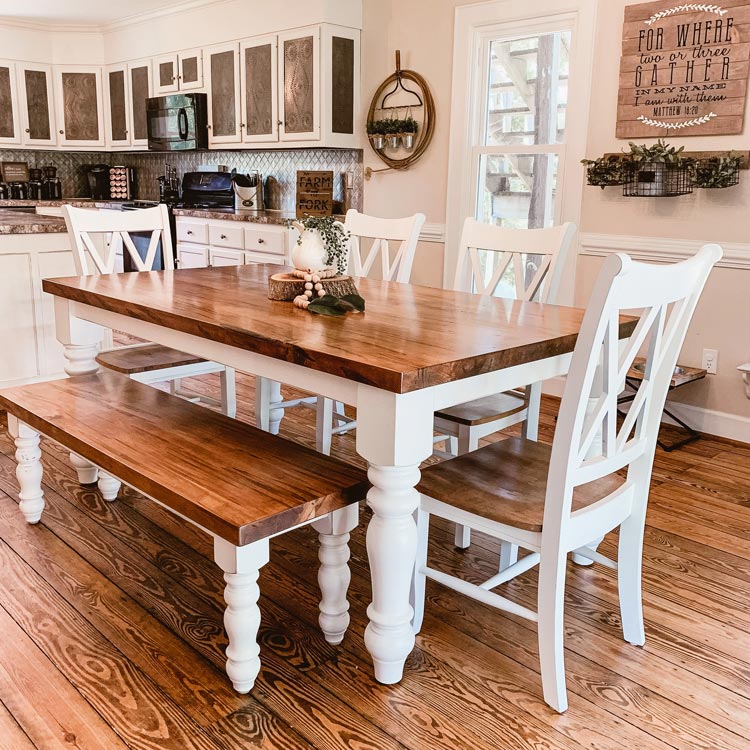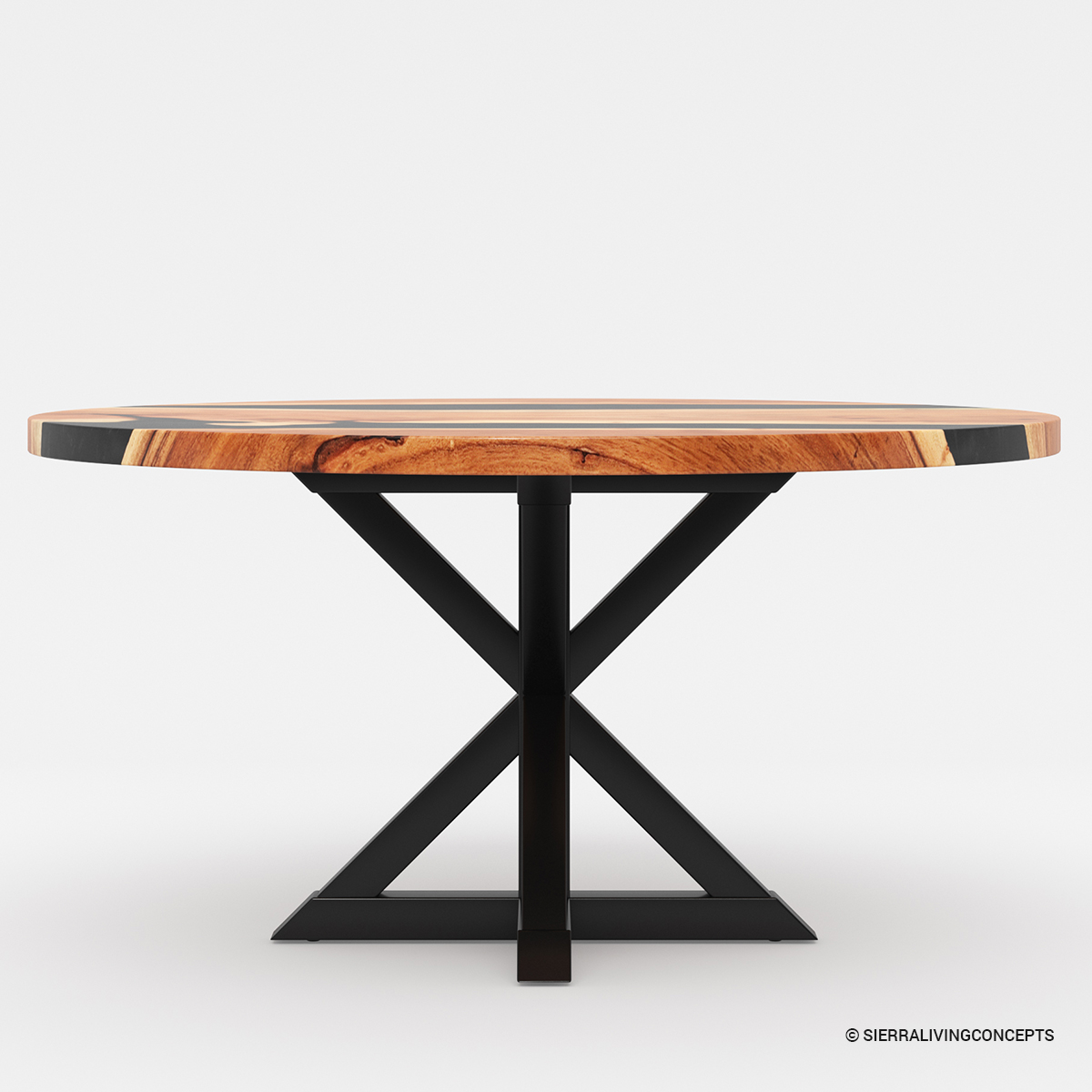The Impact of Dining Room Table Legs on Your Table's Overall Design
The Impact of Dining Room Table Legs on Your Table's Overall Design
Blog Article
Just How to Choose the Perfect Dining Room Table Legs for Your Home Decor
Selecting the optimal dining area table legs is a nuanced procedure that requires mindful factor to consider of numerous components, including your space restraints, visual preferences, and useful requirements. The interaction between materials, dimensions, and designs can dramatically affect the ambiance of your dining location, making it necessary to approach this choice systematically.
Assess Your Dining Space
Examining your eating area is important for picking the right table legs that complement both looks and capability. Begin by gauging the measurements of your eating area, consisting of ceiling elevation, floor area, and distance to other furniture. This info will help establish the ideal size and elevation of your table, which straight affects the option of table legs.
Following, take into consideration the design and layout of your eating space. For example, an open-concept style may take advantage of table legs that provide aesthetic agility, such as slender steel or acrylic choices. Alternatively, a much more traditional setup may require sturdy wood legs that give a sense of durability.
Review the existing color combination and materials in your dining area. Balancing the table legs with these components creates a natural look that enhances the total decoration. In addition, consider the capability needed in your area. If you regularly host big events, think about legs that provide added assistance and security.
Eventually, a comprehensive analysis of your eating room will assist you in making an informed decision, ensuring that your table legs not just enhance the visual appeal but additionally serve sensible objectives.
Consider Your Design Preferences
When selecting eating room table legs, it is necessary to assess your personal design preferences, as they significantly influence the overall visual of your eating area. Your option of table legs can either complement or contrast with existing design, making it vital to align them with your recommended indoor layout motif.
If your home leans in the direction of a modern-day visual, take into consideration smooth metal or minimal wooden legs that give a tidy, clean appearance. For an extra traditional technique, luxuriant wood legs with complex carvings can include a touch of sophistication and refinement. Industrial styles gain from robust, basic materials such as redeemed timber and steel combinations, showing a sturdy charm.
In addition, farmhouse and rustic styles often prefer strong, beefy legs that stimulate a sense of heat and comfort. On the other hand, if your decoration is diverse, you could select unique forms or a mix of products to produce visual rate of interest.

Evaluate Material Options
The selection of material for eating space table legs plays a crucial function in both resilience and visual appeal. Common materials consist of timber, steel, and composite choices, each offering distinct attributes that can affect the overall appearance and longevity of your table.
Wood is a classic choice, known for its heat and convenience. Hardwoods like oak and walnut supply phenomenal stamina and can be ended up in different spots to match any design. Nevertheless, softwoods like yearn are more vulnerable to scratches and dents, making them less perfect for high-traffic areas.
Metal legs, frequently crafted from steel or light weight aluminum, exhibit modernity and industrial beauty. They are immune and highly sturdy to wear, making them ideal for families with kids or regular celebrations (dining room table legs). Furthermore, metal can be ended up in different shades, enhancing the modification opportunities
Composite materials, such as MDF or laminate, deal price and varied designs. While generally much less resilient than solid wood or metal, they can still supply a fashionable appearance and are commonly easy to preserve.
Inevitably, the material you select need to straighten with your lifestyle, aesthetic choices, and the level of usage your eating table will experience.
Determine Height and Size
Picking the appropriate elevation and dimension for your dining-room table is essential for both functionality and convenience. The typical elevation for eating tables generally varies from 28 to 30 inches, permitting adequate legroom for many individuals when seated. It is vital to think about the dimensions of your dining room and the kinds of chairs you intend to make use of.

Additionally, consider the percentages of your dining-room. A bigger table in a large area can develop a grand atmosphere, while a smaller my sources table works well in even more intimate settings. Ultimately, the appropriate height and size will balance with your total decor and boost the dining experience for you and your visitors.
Explore Personalization Possibilities

Additionally, the design of the legs can be tailored to fit various designs, such as rustic, modern-day, or commercial. Tapered legs can evoke a mid-century contemporary feeling, while beefy, block-style legs might reverberate with conventional or farmhouse decor.
Home owners can also explore shade finishes, from all-natural timber discolorations to paint, allowing them to match or contrast with the tabletop and surrounding decor.
Furthermore, leg height can be adapted to accommodate specific seating arrangements or personal choices, enhancing both comfort and performance.
Last but not least, one-of-a-kind embellishments, such as carvings or decorative braces, can additionally customize the table legs, making the dining experience not just a statement however a meal item in the home. By thinking about these modification choices, property owners can produce a dining-room table that genuinely reflects their uniqueness.
Conclusion
Picking the ideal dining-room table legs needs careful consideration of different elements, consisting of the measurements of the dining room, design choices, product durability, and wanted elevation. Modification options better enhance the ability to attain a natural aesthetic that complements the overall decoration. By systematically examining these components, home owners can make sure that the selected table legs not only fulfill practical requirements yet also add positively to the dining experience and ambiance of the home.
Choosing the perfect dining room table legs is a nuanced procedure that needs careful factor to consider of numerous aspects, including web your space restrictions, visual preferences, and useful needs.Assessing your dining space is important for selecting the right table legs that match both visual appeals and performance.When figuring out size, gauge the area where the table will be placed to ensure it fits pleasantly, enabling for at least 36 inches of clearance around the table for very easy motion. A larger table in a sizable location can develop a grand setting, while a smaller sized table functions well in more intimate settings.Selecting the excellent eating space table legs needs mindful consideration of different variables, consisting of the measurements of the dining room, style preferences, material toughness, and preferred elevation.
Report this page